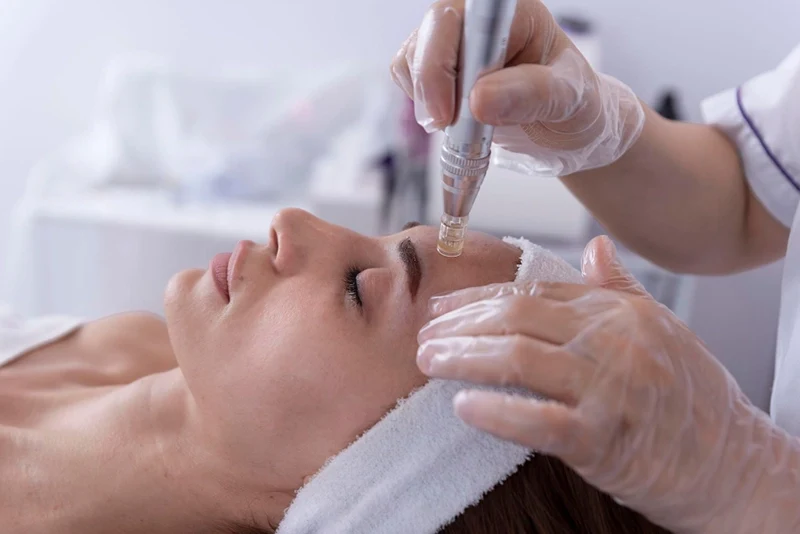Are you someone who struggles with acne scars from previous breakouts? Acne scars can be frustrating and difficult to treat, but microneedling offers an effective solution for smoother, healthier skin.
This minimally invasive treatment promotes collagen formation, which reduces scar depth and improves skin texture over time. But how many microneedling sessions are required to get apparent results? In this guide our experts at AAAP will break it all down for you.
To put it simply, severe acne outbreaks induce inflammation, which results in acne scars. When the skin attempts to heal itself, it may create excessive or insufficient collagen, resulting in various forms of scars. The types of scarring include:
Acne scars can alter skin texture and appearance over time, making people feel self-conscious about their skin. Fortunately, there are treatments available such as microneedling that are highly effective to reduce the appearance of these scars.
Treating acne scars through microneedling has multiple benefits, including:
When done by qualified specialists, such as those at AAAP, microneedling is a safe and efficient technique. Here’s what you can expect from a microneedling session for acne scarring:
Your specialist will assess your skin type, scar severity, and medical history to determine whether microneedling is the right treatment option for you.
To alleviate any discomfort, a numbing cream is first applied to the skin. This typically takes around 20 to 30 minutes to take effect.
A specialized device with small needles is then used to make controlled micro-injuries in the skin. These tiny punctures encourage collagen and elastin formation, which helps in natural healing. The service lasts around 30 to 45 minutes, depending on the treated region.
Following microneedling, your skin may seem red and puffy, comparable to a moderate sunburn. This often resolves within 24 to 48 hours. You will be recommended to avoid sun exposure, harsh skincare products, and excessive touching of the treated region for a few days.
The number of microneedling sessions needed is determined by a variety of factors, including the severity of the scars and the individual’s skin healing capacity. The following is a basic guideline:
All that said, each session builds on the last, progressively improving skin texture and decreasing scar depth over time. While improvements become apparent after the first few treatments, complete effects are usually reached 3 to 6 months after completing the suggested sessions.
Here are some of the top questions our experts at AAAP get about microneedling for acne scarring:
Yes, microneedling is typically safe for all skin types, even darker complexions. That said, those with active acne, eczema, or other skin disorders should book a thorough consultation before starting treatment.
Microneedling is less invasive than laser treatments and has less downtime, making it an excellent choice for delicate skin.
Yes, microneedling is very beneficial for atrophic (pitted) scars because it stimulates collagen formation, which gradually plumps and smoothes out indentations.
For a few days before treatment, avoid exfoliants, retinoids, and direct sun exposure. Staying hydrated and having clean, makeup-free skin on the day of treatment is also advised.
Yes, microneedling can be used with PRP (platelet-rich plasma), chemical peels, or laser treatment to enhance the outcomes. Your medical expert can tailor a treatment strategy to your scar type and skin condition.
To preserve benefits, stick to a regular skincare routine, protect your skin from the sun, and arrange maintenance sessions every 6 to 12 months, depending on your skin type.
If you’re ready to achieve smoother, scar-free skin, schedule a consultation at American Accelerated Aesthetics Plastic Surgery in Dubai to find out how microneedling can help you love your skin again. Give us a call or fill out a contact form to get started!





